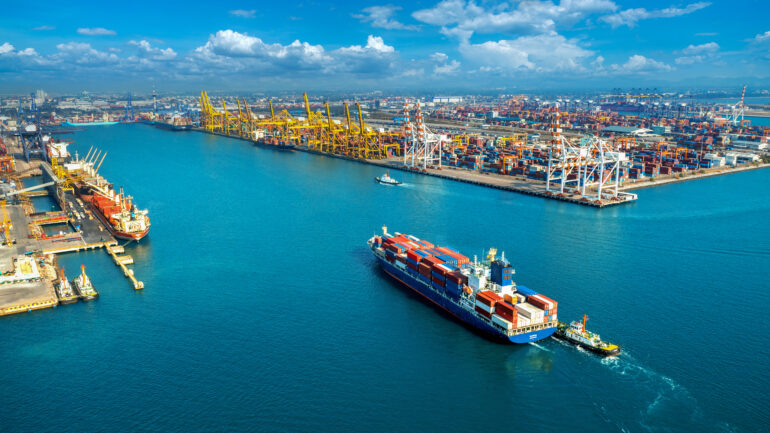The Ocean’s Unaccounted Liabilities

In the calculus of global economics, some numbers frequently go unnoticed, obscured from the spotless balance books of national GDPs. While we celebrate production streams, monitor market ticks with religious zeal, we underemphasize the gaping holes blown into our shared capital by forces we are unwilling to confront fully. This is the insidious, often dramatic, economic truth behind climate change’s effects on our oceans. It’s a gamble we’ve insured against long enough, and now the tab is full.
The ocean is a decades-long unsung hero, a giant sponge taking in about 90% of excess heat and 30% of human-caused carbon emissions. But even the greatest buffer will finally hit a wall, and we are now faced with the prospect of tipping points after which entire industries will fold. Take the fishing industry, already suffering from overfishing and contamination – ocean acidification and temperature rise may pull it apart completely in coming decades. And then consider the cities on the coast, those shining bastions of commerce and progress? Many will be unbearable to work in within decades, making installed capital worthless.
To consider a natural disaster boosts GDP through repair expenditure, while excluding the destruction of the capital, is a ringing condemnation of our current accounting frameworks. It’s equivalent to taking a measure of the economic activity after a fire – the reconstruction – while simply forgetting the fact that the factory burnt down. This leads us to a stark, undeniable fact: the cost of doing nothing is greater than the cost of adaptation.
The Ocean’s Hidden Economic Potential
New research finds that climate solutions based on the ocean can provide a maximum of 35% of the annual reduction in greenhouse gas emissions required by 2050 to meet the goal of keeping global warming to 1.5°C. This is no small adjustment; it’s a sizable amount of needed decarbonization. And most importantly, many of the solutions are ready to be deployed and cost-effective today. We are referring to a multi-faceted strategy:
- Scaling Up Ocean-based Renewable Energy: Floating solar, tidal power, and off-shore wind are no longer novelty concepts but huge opportunities, potentially reducing gigatonnes of emissions per year. Offshore wind investment has doubled in four years only, indicating commercial maturity.
- Decarbonizing Ocean Shipping: Shipping, a top 10 global polluter if it were a nation, is in urgent need of a shift towards energy efficiency and zero-emission fuels such as hydrogen and ammonia. It is not merely a matter of cleaner air; it is future-proofing a major conduit of world commerce.
- Preserving and Restoring Blue Carbon Ecosystems: Blue carbon ecosystems that include mangroves, seagrasses, and tidal marshes are not mere scenic landscapes; they are power-packed carbon sinks that can store an equivalent of five times the carbon per square area compared to tropical forests. Blue carbon initiatives, in addition to providing a rich array of co-benefits such as job creation, tourism, and protection of the coast and fisheries.
- Sustainable Ocean-based Food Production: With increasing global populations comes increasing demand for protein. A change in diet towards lower-resource “blue foods” such as algae, fish, and shellfish will lower emissions drastically compared to traditional land-based alternatives. Although novel measures such as marine carbon dioxide removal and iron fertilization of the seas are on the horizon and hold promise for gigaton amounts of carbon dioxide removal, much more scrutiny in terms of ecological and socio-economic impacts is needed before mass implementation.
In the near term, attention should continue to be focused on the known, workable approaches with a definitive return on investment.
Bridging the Finance Chasm
The economic logic is sound but is matched by a glaring disconnect: finance to support those critical ocean solutions has been abysmally low. To achieve the ocean’s estimated full contribution to emissions mitigation will cost a minimum of $1 trillion in extra finance by 2030, scaling to $2 trillion by 2050, by some estimates. It is no small amount, but a sensible investment against the “astronomical” long-term cost of inaction. The solution is in linking global finance to climate and ocean action.
A major contribution needs to come from financial institutions, not only through investing in sustainable initiatives, but through actively discouraging unsustainable investments. It cannot be a simple yes/no game; it must be a multi-dimensional, balanced effort to enable transition even in the so-called “brown” sectors actively looking for decarbonization options. Public institutions and regulators are an essential part of this equation, through fiscal incentives and transparent regulation. We require an overlap of language between the private sector’s interest in risk and return, and policymakers’ interest in mobilization of resources.
The separation of geopolitical interests, reflected in the sands that shift on climate agendas, is a major danger. But, as we found in the 2008 financial crisis, global collaboration, even between competitors, can bring collective answers. The climate crisis’s ocean aspect requires the same sense of urgency and cooperation.
A strategic necessity of economic resilience and sustainable development, such action requires a mindset shift: acknowledging that addressing the ocean’s woes is direct climate action, and climate finance is ocean finance. We already possess much of the scientific understanding all we need is stronger policy frameworks. The unseen costs of a degraded ocean will soon outweigh any perceived expense of investing in it. It is time boards and ministries alike acknowledge this evident economic reality and act commensurate with the foresight it requires.


